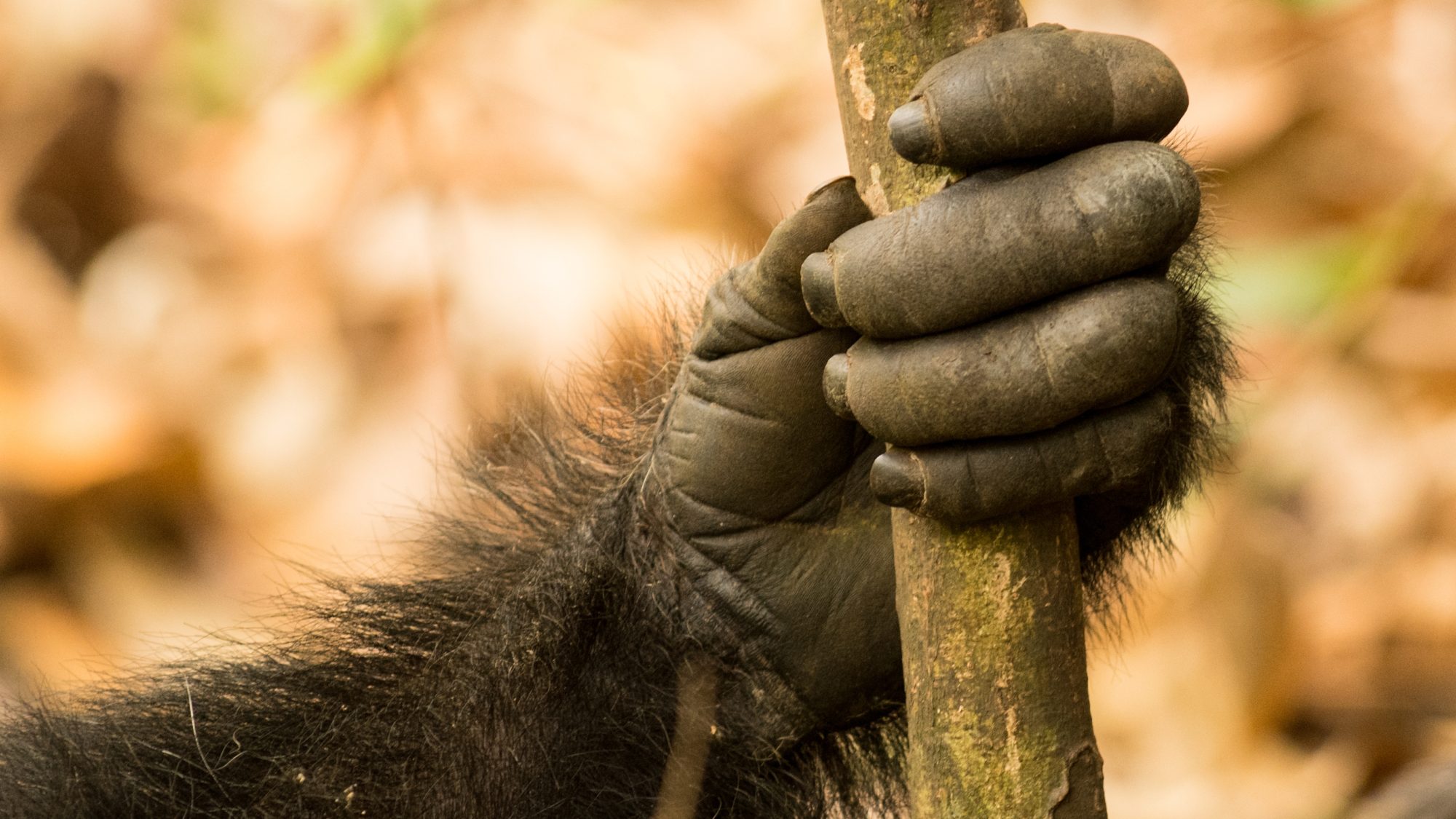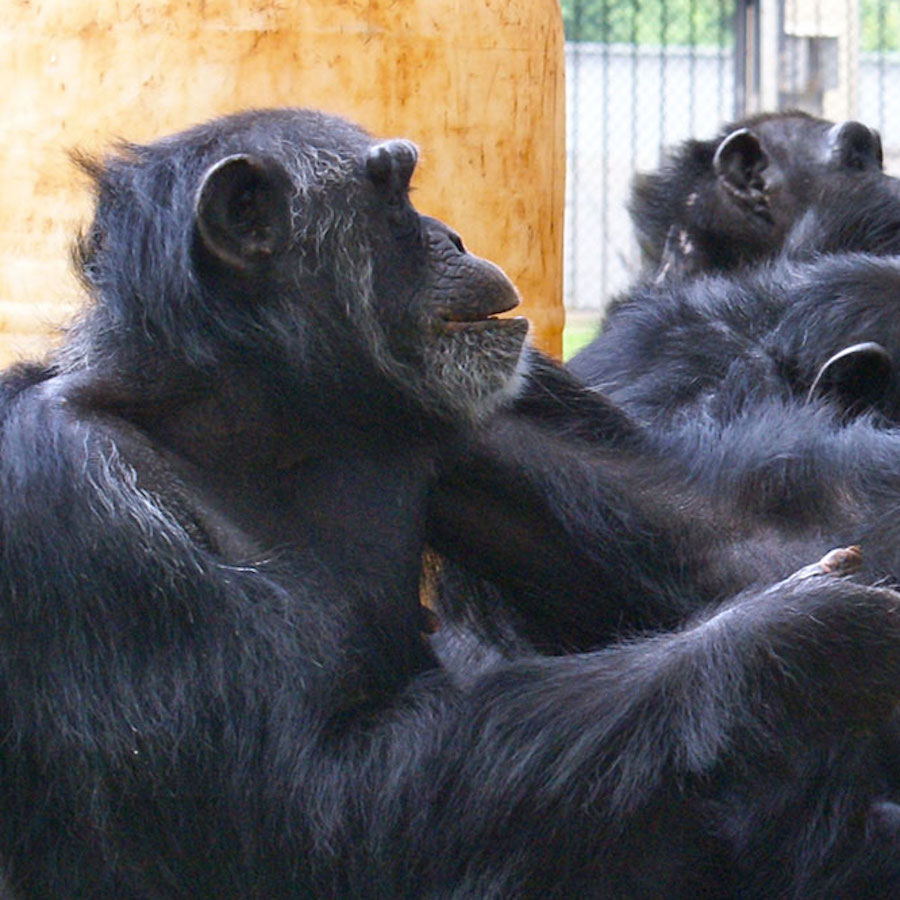

While chimpanzees do climb, they tend to be terrestrial and express a mixture of bipedal stances, often ‘knuckle-walking’ by walking on all fours with their wrists extended. Both of us have smoothed and highly grooved carpals, allowing extensive rotation and flexing, an essential condition needed for arboreal climbers. Naturally the chimpanzee wrist shares a great deal of similarity with the human wrist, owing to our intimately close ancestry.
#CHIMPANZEE HAND FULL#
The chimpanzee wrist is comprised of eight carpal bones, having lost the prepollex and centrale, the remaining majority of primates tend to have the full set of ten. Whereas carpals generally appear more curved and smooth in the case of species that require a large amount of dextrous movement, like gibbons and other arboreal (tree-living) primates, who tend to enjoy doing a good swingy-swingy.
#CHIMPANZEE HAND FREE#
A fossorial (burrowing) animal, such as a mole, that spends most of its free time digging about in the soil tends to have a tougher and squarer set of carpal bones, thus helping resist pressures caused by the strong earthen substrate. Image from Lewis (1989).Īlthough relatively unstudied until recent years, the shape of carpal bones tend to provide a wealth of information relating to the ecology of the species in question, since the forearms tend to do a lot of the work an animal undertakes during its day-to-day routine. The standard mammalian wrist, including labelled carpal bones. Those comprising the bottom row are the Scaphoid (S), Lunate (L), Triquetral (or Cuneiform, Cu) and Pisiform (Pi) along the top are the Trapezium (Tm), Trapezoid (Td), Capitate (C) and Hamate (H) often there are an extra two bones thrown in as a bonus: a tiny bone below the thumb called the Prepollex (pp), and an intermediary bone in the centre of the wrist called the Centrale (c).
#CHIMPANZEE HAND SERIES#
The mammalian wrist is formed of a series of globular, tessellating bones called the carpals, forming two rows. This solitary manus will do enough, for what lies within is extra special…Ī Whistle-stop Tour of the Mammalian Wristīridging the gap between the long bones of the forearm and the proceeding bones of the digits there is a fertile land of great mystery and intrigue, otherwise recognised as the wrist. But it is not the remaining post-hand specimen that I am interested in today. They are highly intelligent, even for primates, and form societies with highly complex structures, building language, traditions and not to mention tools. I understand that by re-working Eric Idle’s Eric the Half a Bee song to read ‘chimpanzee’ instead of ‘bee’ most of the rhyming joke is lost, but I digress.Ĭhimpanzees, Pan troglodytes , along with bonobos, are our closest living relatives. LDUCZ-Z1146.Īt the Grant Museum of Zoology we house enough material to comprise at least half a chimpanzee, probably even several halves… While human paws might seem more sophisticated, the researchers' analysis suggests that the basic structure has been around for a long, long time.Preserved chimpanzee manus (hand). They sampled living species-humans, apes and monkeys-as well as extinct species, including Proconsul heseloni, Ardipithecus ramidus and Australopithecus sediba.īased on their measurements they concluded that the ancient ancestor of chimps and humans likely had more human-esque hands. To see if our last common ancestor was more like a human or a chimp, researchers measured how the proportions of human and chimp hands had really changed over the years. But human hands have stayed quite similar for millions of years, tool use or not. Some early hominins that didn’t make tools and still appear to have hands that are more like those of modern humans. While chimpanzees grew longer fingers and slightly shorter thumbs, well adapted to their tree climbing lifestyles, humans developed smaller fingers and slightly longer thumbs-ideal for precisely gripping things like tools.īut now, a growing body of evidence is starting to suggest that only one piece of that logic is sound, writes Balter.

Scientists have long thought that when humans and chimps diverged seven million years ago, natural selection shaped chimp and human hands differently, explains Michael Balter for Science. That’s what researchers report in a study published July 14 in Nature Communications.

However, in some respects, our hands might actually be more primitive than those of our closest Great Ape relatives, chimpanzees. Humans like to think they're pretty dexterous with their sleek thumbs and strong grips.


 0 kommentar(er)
0 kommentar(er)
